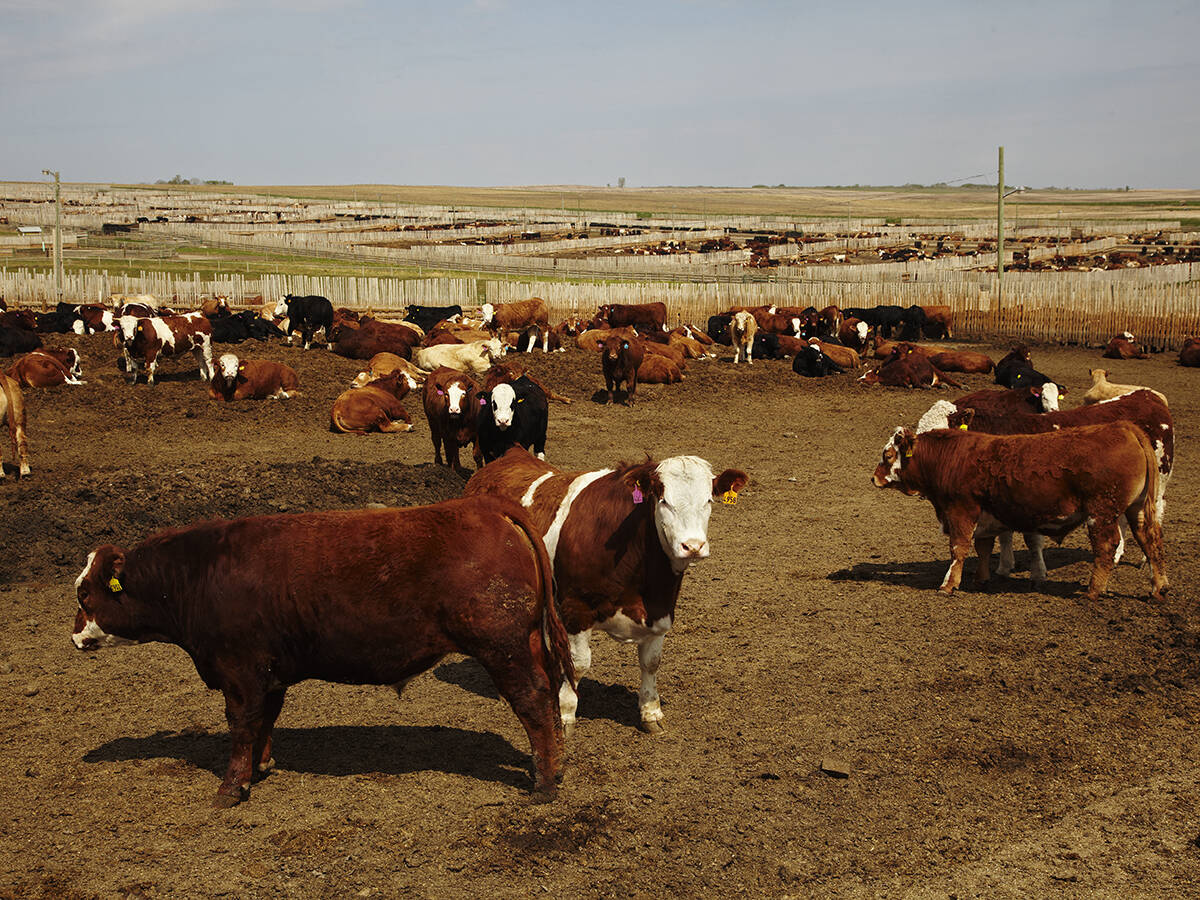This cattle market information is selected from the weekly report from Canfax, a division of the Canadian Cattle Association. More market information, analysis and statistics are available by becoming a Canfax subscriber by calling 403-275-5110 or at www.canfax.ca.
Fed prices flat
Fed steer and heifer prices in the cash market were flat for the week ending Jan. 19, and volumes were too light to establish weighted average prices. Producers say cattle performance has been strong this fall and winter despite the recent extreme cold snap, and some cattle are 30 days ahead of schedule.
Read Also

Canfax cattle market report – November 13, 2025
The Canfax cattle market report for November 13, 2025. Fed & feeder cattle prices, butcher cow trends, and cutout market insights.
Producers selling into the contract market are seeing discounts for heavy carcasses. Many contracts have discounts from 1,000 to 1,050 pounds, and those discounts are $20 to $35 per hundredweight.
Yearling steers and heifers placed in June and July sold into the cash market in January, and feedlot margins were negative $340 per head. This is the second largest negative margin seen in the past 33 years, behind 2016.
Dressed sales/bids were reported at $362-$365 per cwt. delivered.
U.S. packer interest was noted, but no cash sales were confirmed. If basis levels continue to weaken, look for more U.S. interest in future.
Western Canadian steer carcass weights continue to hover near 1,000 pounds, about 79 lb. heavier than last year. Heifer weights are 52 lb. heavier than a year ago.
Ontario dressed sales ranged from $375-$378 per cwt. to hold steady. Traded cattle are booked for immediate delivery.
Ontario fed prices have averaged in the mid $220s per cwt. for the past month and feedlots there are more current than in the West.
Iowa and Nebraska dressed sales were steady at $274 per cwt. Significant trade had not developed in the south, where bids were $172-$173 per cwt. U.S. beef production was estimated at 524 million lb. for mid-January, the smallest production since 2020.
U.S. retail prices for fresh beef have dropped one percent, but are still nine percent higher than last year. Cold temperatures and pen conditions have caused some finished cattle to lose more than 50 lb. Carcass weights have peaked and expected to trend lower.
Non-fed prices soar
Non-fed prices are at the highest level for January in the last 10 years. Alberta D2 cows were up $9.21 per cwt. from last week to $130.67 per cwt. D3 cows were up $8.47 per cwt. to $115.38 per cwt.
Alberta cows were trading $9 per cwt. below U.S. utility cows and have been at a discount for 23 of 24 weeks since the start of August. Butcher bulls were up $10.26 per cwt. from the previous week to $152.33 per cwt.
Western Canadian slaughter volumes year to date for the week ending Jan. 13 were 48,533 head, down two percent from last year. Eastern Canada slaughter volumes totalled 13,275 head, up a strong 27 percent from last year. However, eastern cow slaughter is down 15 percent for the first two weeks of 2024.
Auction volume down
Alberta auction volume for the week ending Jan. 19 was 10,565 head, down 43 percent over the previous week due to severe weather and cancelled sales.
Steer prices were mixed with 550 lb. and 850 lb. steers softer by $4.29 and $1.16 per cwt., respectively.
The largest jump was $16.56 per cwt. in 750 lb. steers.
Heifers saw better support with only 750 lb. heifers down 51 cents per cwt. The largest hike was on lightweight 450 lb. heifers, which were up $13.92 per cwt.
Canadian feeder export volumes for the week ending Jan. 6 were 1,363 head, up 62 percent compared to the same time in 2023. Most of those were from the east.
Cut-out rally continues
The ongoing rally in U.S. cutouts continued with Choice closing at $296.29 per cwt., up 3.6 percent. Select cutouts closed at $283.76 per cwt., up 5.1 percent. Cut-out values are tracking closely with 2022.
The U.S. Department of Agriculture released its Jan. 1 cattle-on-feed report, which is seen as neutral because placements, marketings and on-feed inventories were in line with expectations.














